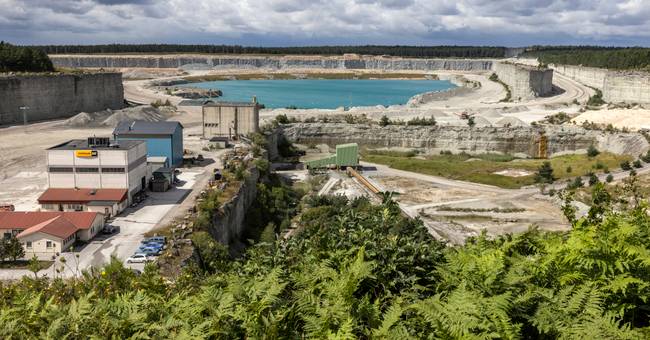Lime mining risks destroying groundwater by leaking salt water.
These are the fears that exist with cement production on Gotland.
But an acceptable scientific analysis of how the groundwater is affected is missing in the cement company's application, according to the Supreme Land and Environmental Court.
Application substandard
It was on 6 July that Cementa's application for continued operations at Slite was rejected by the Supreme Land and Environmental Court.
The application was considered so substandard that the Supreme Land and Environmental Court did not consider it complete.
According to the court, a complete environmental impact statement was missing.
The groundwater issue is a major problem on Gotland and the groundwater at Cementa's lime quarry affects the drinking water supply in central Gotland and several surrounding Natura 2000 areas that are specially protected in environmental legislation.
The scientific model is criticized
When the Land and Environmental Court's decision from 2020 was appealed, it was especially the robustness of Cementa's groundwater model that was questioned.
Measurements in the area did not give the results that the model predicted.
Cementa then supplemented the model and carried out measurements in boreholes over a period of time to calibrate the model, ie adapt the model to the actual conditions.
- Models always have a great deal of uncertainty if they are not based on measurements in the field, says Philipp Wanner who is a hydrogeologist at the University of Gothenburg.
In its statement, the Swedish Environmental Protection Agency writes that Cementa's field measurements are not sufficient.
The boreholes are too few and the measurement time too short to be able to give a sufficiently good picture in the heterogeneous environment that prevails.
Lack of scientific basis
"The company does not seem to use the knowledge base to be able to describe in a scientific way the cumulative impact from current and applied activities," claims the Swedish Environmental Protection Agency.
The Supreme Land and Environmental Court writes that more measurements would probably lead to further changes to the model and therefore the model's ability to predict how Cementa's future lime mining will affect the environment can be questioned.
Does not work at the local level
The Court also states in its decision that the problem with the groundwater model used by Cementa is suitable for regional areas, ie not for local areas - such as the limestone quarries that Cementa has examined.
This could explain why the model needed to be updated.
Not taken into account the entire material
But Cementa claims in its appeal that the court has not taken into account all their evidence and writes:
Cementa has repeatedly pointed out, including at the main hearing in the Supreme Land and Environmental Court, that the company's investigation into the impact on local conditions is only to a very small extent based on the results of groundwater modeling.
Extensive hydrological and biological field data have been used to assess local conditions.
”
Salt water penetrates
The Supreme Land and Environmental Court writes in its judgment that the groundwater quality in Central Gotland-Roma already today does not meet the requirements for good groundwater status.
It penetrates salt water - and this can be shown by measuring the chloride content.
"There are sharply elevated levels with a tendency to increase during the sampling period."
Salt already in the 1950s
In its appeal of the judgment, Cementa claims that there were elevated levels of chloride as early as the 1950s before lime mining had begun in the specific area - and that it could therefore not be due to lime mining.
However, the Supreme Land and Environmental Court writes that it cannot explain the increase in chloride levels that can be seen already now.

